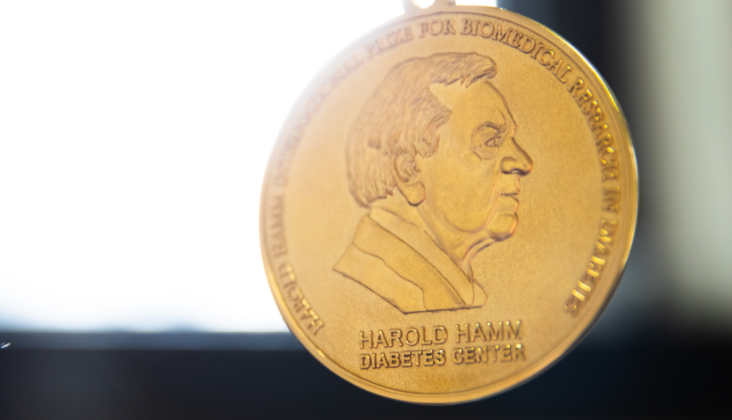Selection Process & Jury
Eligibility
Eligible nominees include individuals, teams of researchers, or research institutions and are nominated solely for the scientific merit of their work. Although preference is given to scientific breakthroughs with direct or obvious clinical applications, all major accomplishments in type 1 or type 2 research are considered by the Selection Jury. Employees of for-profit pharmaceutical or biotechnology companies are not eligible.
Open Call for Letters of Recommendation
Nominations for the Prize are made by members of the Selection Jury and are therefore not open to application. However, Letters of Recommendation for nominations will be accepted to afford the community at large an opportunity to suggest Nominees for the Prize to the Selection Jury.
Letters of Recommendation for nominations are provided to the jurors for consideration. Jurors may review these Letters at their discretion. Any person writing a Letter of Recommendation for Nomination is requested not to make direct contact with Jurors for the purpose of soliciting a recommendation for nominations or selection. Letters must not exceed 1,000 words. Letters are confidential and only made available to members of the Selection Jury.
View key dates and deadlines for the open call for nominations.
Selection Jury
Selection Jury members are appointed by Harold Hamm Diabetes Center representatives with priority given to individuals who have served in international capacities in the field of diabetes research such as editors of major diabetes journals or recent leaders of major diabetes-related organizations.
2022-2023 Selection Jury
-
Jed Friedman, PhD, Selection Jury Chairperson
-
Steven E. Kahn, MB, ChB
-
Jeffrey Pessin, PhD
-
Maike Sander, MD
-
Randy Seeley, PhD
-
Clay Semenkovich, MD
2020-2021 Selection Jury
- Jed Friedman, PhD, Selection Jury Chairperson
- David A. D'Alessio, MD
- David M. Nathan, MD
- Alvin C. Powers, MD
- Philipp E. Scherer, PhD
- Juleen R. Zierath, PhD
2018-2019 Selection Jury
- Steven Chernausek, MD, Selection Jury Chairperson
- Bruce Buckingham, MD
- Steven Kahn, MB, ChB
- George King, MD
- Jay Skyler, MD, MACP
- Bernard Thorens, PhD
2016-2017 Selection Jury
- Kenneth Copeland, MD, Selection Jury Chairperson
- Mark Atkinson, PhD
- Thomas Danne, MD
- Vivian Fonseca, MD
- K. Sreekumaran Nair, MD, PhD
- Aaron Vinik, MD, PhD
2014-2015 Selection Jury
- Kenneth Copeland, MD, Selection Jury Chairperson
- Ele Ferrannini, MD
- Georgeanna Klingensmith, MD
- Robert Rizza, MD
- Elizabeth Seaquist, MD
- Gordon Weir, MD
2012-2013 Selection Jury
- Timothy Lyons, MD, FRCP, Selection Jury Chairperson
- John Buse, MD, PhD, CDE
- Edwin Gale, MD
- Barbara Howard, PhD
- Paul Robertson, MD



-
Understanding Youth Type 2 Diabetes: OU College of Medicine's New Study
The University of Oklahoma College of Medicine is recruiting participants for a study aimed at understanding the factors behind Type 2 diabetes in ...
Read More -
Harold Hamm Diabetes Center Spring 2024 Newsletter
Spring 2024 Newsletter (pdf) The Spring issue highlights: The U54 CIRCLE center grant of $10.5 Million, awarded by NIH Dr. Busik – feature of the ...
Read More -
Breakthrough Type 1 Diabetes Drug Now Offered at OU Health
A new treatment targeting the root cause of Type 1 diabetes is now available at OU Health, and for pediatric patients at high risk, this new ...
Read More



